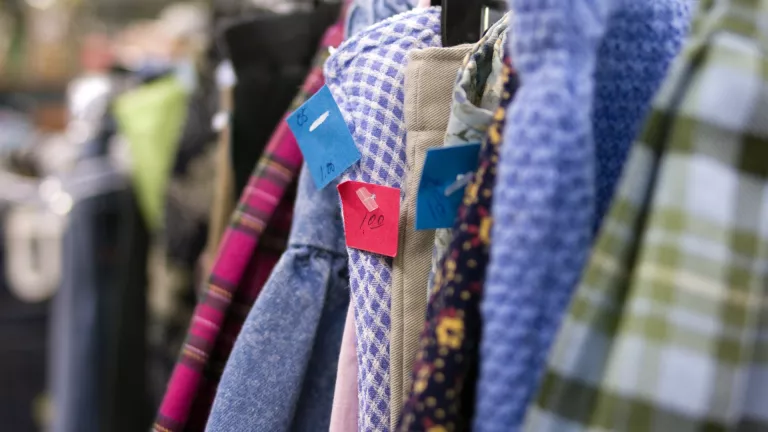By Deborah Williams

The fashion industry is among the most polluting in the world. It generates 10% of our greenhouse-gas emissions.
Approximately two-thirds of our clothing contains oil and gas derived synthetics, using very carbon-intensive processes. Cotton, too, can have a large footprint. Representing about 30% of all textile fibers, cotton often uses a lot of water, pesticides and fertilizer. To make a single pair of jeans, it takes about 1,000 gallons of water—from growing the cotton to delivering the final pants.
According to the “Handbook of Textile Effluent Remediation,” the textile-finishing industry also uses about 20% to 25% of all globally produced chemical compounds. Approximately 20% of worldwide wastewater is generated from fabric dyeing and treatment.
And, what about microfibers? The equivalent of 50 billion plastic bottles of plastic microfibers are flushed into the ocean annually.
Here’s the good news. There are great strategies to reduce the carbon, water and chemical footprint of our clothing choices.
First, we can ask ourselves: Do I really, really need this additional item of clothing? If the answer is “no”—bravo! Remember to consider what you already have, including repairing when needed. There are some great mending and repairing businesses in Santa Barbara and Ventura counties.
If you truly need an additional item of clothing, buying or swapping pre-owned (used) clothes is the best option. There are so many ways to do this, both on-line and in stores. The second-hand clothing market is the fastest growing segment of the textile sector, expanding 21 times faster than conventional retail. Projections are that secondhand will be 1.5 times larger than Fast Fashion by 2028.
On-line used clothes shopping is fun and easy. Here are a few links with great on-line possibilities: “39 Online Thrift Stores for the Best Secondhand Clothing;” “Top Used Clothing Stores Online;” ThredUp; and Poshmark.
There are also lots of options to buy pre-owned clothes in person, like “The Best Thrift Shops in Santa Barbara,” “Best Thrift Stores in Ventura, CA,” Craigslist, Nextdoor, OfferUp and garage sales.
If you cannot find pre-owned clothes, the next best choice is buying clothes from companies that use recycled materials, upcycled materials and organic cotton—and provide livable wages and safe working conditions for their employees. Finding labels that do this is easy, just look at sites like “12 amazing brands that make clothes using recycled plastic” or “Or favorite clothing made from recycled materials,” as well as local Santa Barbara and Ventura based clothing companies like Patagonia, Deckers, and Toad and Co.
Finally, before throwing away any used clothing, consider selling them online. For good tips and sites check out “good on you” and “How to sell clothes online and make money fast! (2023). Alternatively, sell them in person (garage sales, Craigslist, etc.) or donate them (Goodwill, Alpha Resource Center, and more).
Furthermore, you can reuse the material from your clothes for quilts, pillows, rags or other items.
According to the World Bank, 87% of the total fiber input for clothing is incinerated or disposed of in a landfill. While Germany collects approximately 75% of all used clothing (reusing 50% and recycling 25%), the US only collects 15%, and worldwide only 1% of used garments are recycled into new clothing. We can—and must—do better.
Here are two final carbon reduction strategies for your clothes: air drying and cold water. An average household can reduce their carbon footprint by 2,400 pounds per year by air drying their clothes. Because clothes dryers represent around 5.8% of residential electricity use, you will also save money by energy-free air drying.
Washing your clothes in cold water most of the time will also save money and reduce emissions. Up to 90% of the washing machine’s energy use goes toward heating the water. You can save up to 864 pounds of emissions per year by washing four out of five loads in cold water.